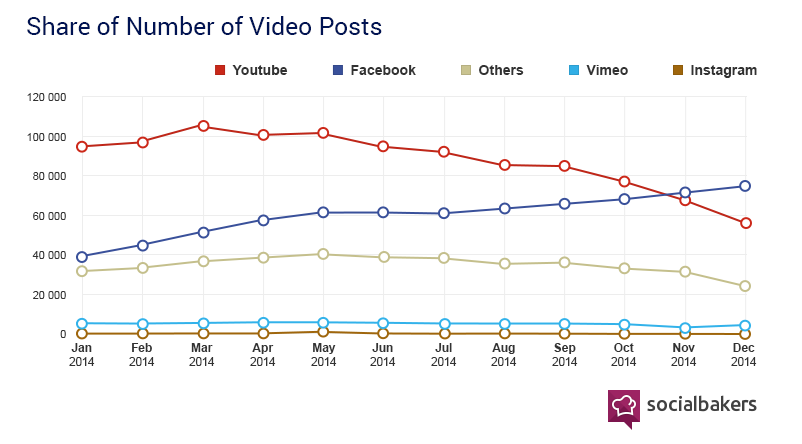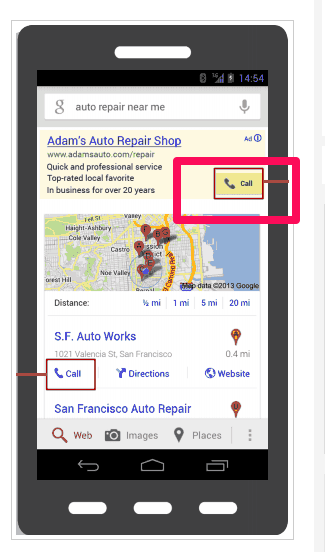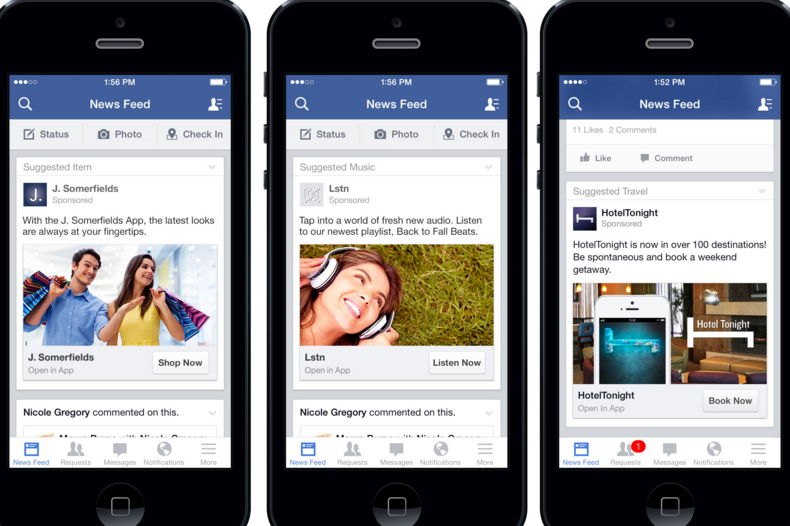
It’s the battle of the titans as the two biggest online marketing channels go head to head.
Who Wins?
There are pros and cons for each channel.
In this post, I’ll breakdown Google Adwords and Facebook Ads and give you a side by side comparison of each.
Google Adwords has been around longer than Facebook Advertising.
Google’s share of global net ad revenue was 30% compared to Facebook’s share which is only 7.75%.
There are several differences between the ad networks.
The main difference is the behavior of the traffic.
Facebook is like a party.
It’s a social gathering with your friends and family.
At a party do you think people are looking to buy things?
Probably not – Google is different.
Google is like the mall.
When people go to a mall they can be looking for things to buy or be ready to buy.
They have a buying mindset.
If you understand these two differences, you’ll have a much better grasp on how to use these two channels for your business.
There are a lot of advantages that one channel has over the other and vice versa.
The best way to learn is to test each channel and see which gives you the highest ROI.

Let’s go to the tape and take a side by side by comparison of each channel.
Google Reach
Google has three networks that you can advertise with.
Google’s Search Ads, Google’s Display Network, and Google’s Search are a partner network.
Combined, you can reach 90% of the internet with these three networks.
Google controls 67.6% of the U.S. search market.
Google Adwords can reach over 2.6 billion Google searches every month.
You obviously can’t target everyone but a lot your advertising reach will depend on the keywords being used.
The sites you choose to advertise on will also be a large factor.
Facebook Reach
Facebook has over 1.49 billion users worldwide.
There are over 2.5 million advertisers on Facebook.
Over 1 million small to medium sized businesses advertise on Facebook.
The average Facebook Ad, per thousand impression, is $5.99.
This has risen considerably since a couple of years ago where it cost only .25 cents to reach one thousand people.
Google Targeting
Google allows you to target based on the following:
- Location- You can target by country, areas within a country, radius around a specific location, and location groups.
- Keywords- You can target based on relevant keywords being used. Make sure to create a relevant keyword list.
- Negative Keywords- You can limit the visibility of your ads by including negative keywords. This will help you display your ads to people that are only interested in what you have to offer.
- Demographics- You can target based on age, sex, and parental status.
- Device– Google allows you target based on device, which includes desktop, mobile, and tablet.
- Language- Google allows you to target different languages.
Google Re-Marketing
This is by far the most powerful targeting feature that Google has.
You can target people that are already interested in what you have to offer at a fraction of the cost.
There are five different ways Google allows you to use re-marketing.
You can target by:
- Standard re-marketing.
- Dynamic re-marketing.
- Re-marketing for mobile app.
- Re-marketing lists for search ads.
- Video re-marketing.
If you want to learn more about Google Re-marketing check out the posts below:
- 19 Strategies for better Re-marketing
- Ultimate Guides to Adwords Re-marketing
- The Complete Guide To Adwords Re-marketing Based Practices
Facebook Targeting
Facebook allows you to target based on the following:
- Custom Audiences- Custom audiences can be website visitors, your email list, or mobile app installs.
- Location- You can target based on country, city, radius, and even zip codes.
- More Demographics- You can target based on net worth, education level, schools, graduation year, and a lot more.
- Age & Gender- Facebook allows you to target age and gender
- Interests- Instead of keywords, Facebook allows you to target on interests. There millions of interests.
- Behaviors– Activities that people do on or off Facebook that informs you of things like travel preferences, purchase behavior, and device usage.
- Connections- You can target people that like your page and friends of people who like your page.

Facebook Re-targeting
Similar to Google Re-marketing Facebook Re-targeting is the powerful targeting feature that Facebook has.
Facebook allows you to create custom audiences based on the following:
- Customer List.
- Website Traffic.
- App Activity.

Facebook Re-targeting clickthrough rates are 21x higher than regular Facebook ads.
The main difference between Google Re-marketing and Facebook Re-targeting is that Google allows you to re-market outside their own network (Google partner sites).
While with Facebook, you can only Re-target inside Facebook.
Google Adwords for Video
Google Adwords has increasingly become more expensive over the years.
A cheaper alternative, that not many marketers use, is Google Adwords for video.
On average it only costs 6 cents per view.
There are three types of video ads:
- In-Stream Ads- These are ads that can appear in the beginning, middle or end of Youtube partner videos.
- In-Display Ads- These ads appear on the right-hand side when watching a video.
- In-Search Ads- These ads appear when specific keywords are searched and aren’t played until someone plays the video.
Video Re-Marketing
Google allows you to link your Adwords account with your Youtube account.
You can advertise to any of the following:
- People who watch any of your videos.
- People who take an action (like, dislike, comment, or share) on any of your videos.
- People who view your video as a TrueView video ad.
- People who visit or subscribe to your YouTube channel.
If your product/service works well with a video, and chances are that it will, then Google Ads Video re-marketing is one of the best strategies you can use.
Facebook Video
Gary Vanyerchuck frequently says that Facebook video will one day replace your T.V.
With the tremendous growth Facebook video has shown, he might be right.
According to Social Bakers, Facebook recently passed Youtube on the number of shares per video.
There are now more than 8 billion video views per day, and this number doesn’t seem to be slowing down.
 I couldn’t find the average cost per view for Facebook myself, but I have gotten as low 1 cent per view.
I couldn’t find the average cost per view for Facebook myself, but I have gotten as low 1 cent per view.
You should keep in mind that Facebook counts a video view someone that has watched your video for only 3 seconds.
Facebook provides useful tips on creating Facebook videos here.
Facebook will push out your video a lot more if you upload the video natively.
This means that you have to download the video onto your computer and upload it on Facebook.
Facebook won’t push a video link as much a native video.
Autoplay vs. Skippable
The one big difference between Facebook videos and Youtube videos are the way the networks charge per video.
All of Facebook’s videos are on auto-play and the viewer has control on whether to un-mute the video.
On Youtube, advertisers are only charged when a viewer watches the whole ad.
This results in a more accurate cost per video view.
Google Mobile Advertising
Mobile search is becoming the most popular form of search and the stats show this.
70% of mobile searchers call a business directly from a search result.
Mobile devices account for 52% of paid search clicks.

Google Adwords allows you to reach multiple types of devices with different ads.
Ads can appear on smartphones with full internet browsers on the following locations:
- Text ads.
- Image ads.
- App promotion ads.
- HTML 5 ads built with Google Web Designer.
Google made a video explaining their mobile ads check it out below:
Facebook Mobile Advertising
Facebook Mobile advertising is now more important than desktop advertising.
A few years ago Facebook made a bet on mobile overtaking our computers as the dominant machine in our lives.
They were right and the stats bare this out.
There are now more than 1.44 billion Facebook mobile users and 944 million mobile active daily users.
47% of these users only log in through their mobile phones.
What this means to you as an advertiser is that all your web properties, landing pages, emails, and websites should be mobile responsive.

You can have a lot of different types of ads on mobile. They include the following:
- Clicks to Website.
- Website Conversions.
- Page Post Engagement.
- Page Likes.
- App Installs.
- App Engagement.
- Local Awareness.
- Event Responses.
- Offer Claims.
- Video Views.
Remember to keep in mind that most video views are going to be on mobile.
Facebook also allows you to advertise on Instagram as part of their mobile ad platform.
Instagram has the highest engagement of any online social network.
Right now is the best time to advertise on Instagram as advertisers flood the network.
This will make it more competitive and less effective.
Google: Low Hanging Fruit vs Facebook: Social Party
The main difference between both online marketing channels is the behavior of the traffic.
With Google, if you target keywords with commercial intent you’ll have a much better chance of generating sales quickly.
With Facebook, you have to first seduce your prospects.
They have to know, like, and trust you before they will buy from you.
This is why so many businesses fail with Facebook advertising.
They think it’s like Google and fail to realize the difference.
With Google advertising, you can target the low hanging fruit.
These people usually have already done the research and are ready to buy.
People don’t go on Facebook to buy stuff or to see ads.
They go on Facebook to see what their friends and family are doing.
Identity-Based Targeting
Google recently launched their customer based targeting product.
Customer match gives marketers the ability to create and target (or exclude) their own customer lists by simply uploading email addresses.
This allows marketers to advertise on search, Youtube, and G-Mail campaigns.
These emails do not have to be G-Mail addresses only.
Google has a slightly higher match rate than Facebook.

Facebook has had this option for a couple of years.
You can create ads on Facebook by uploading email lists.
The main difference is Google only allows emails from your own customer list.
While Facebook does not have this requirement.
It’s difficult to compare the two since Google Customer match is a new product and I have not tested it yet.
The Campaigns
Another big difference is at the campaigns levels.
Once you’ve tested and optimized your Google Ads it’s more of a set and forget type of campaign.
With Facebook, there is a phenomena call advertising fatigue.
People will grow tired of seeing your ads in their news-feed.
This is why it’s important to change your ads every few days to avoid this.
Facebook is also stricter on the types of advertising they allow on their network.
The two niches that have trouble getting approved are health & fitness and the dating & relationship markets.
I have seen a lot of Facebook ad accounts banned because they didn’t follow certain guidelines.
Facebook is experiencing explosive growth and the guidelines that Facebook have are not always clear.
An ad can get approved today and disapproved tomorrow.
Define Your Sales Process
Before you start advertising on Google or Facebook it’s important to define your sales process.
What are the exact steps you take before selling your product or service?
This will highly depend on the type of business you are in.
If you are selling widgets the process will look a lot different than a construction bid.

Without having a defined sales process in place you risk losing on opportunities both on Google and Facebook.
Conclusion
Most businesses should test Facebook and Google.
Chances are that one channel will have a higher ROI than the other.
A lot of businesses think advertising on social media won’t work for them.
Even if they have tried it and failed, the more likely reason is they made the mistake of thinking it’s like Google.
The main difference between the two is Google is best for immediate sales and Facebook is best for lead generation and brand awareness.
Wishpond created a cool infographic that compares both networks side by side.
Check it out below:

Download this infographic.
